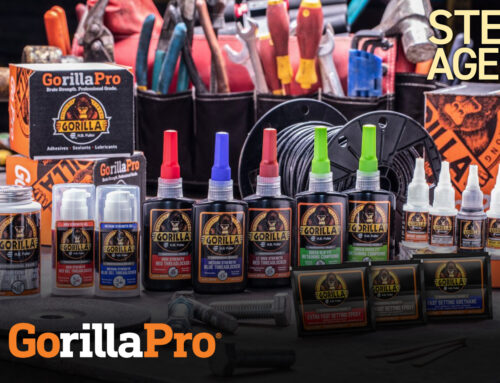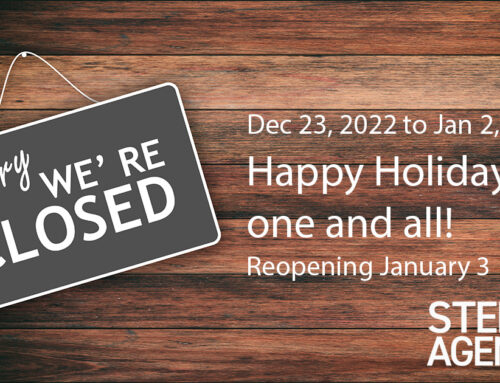Who doesn’t want to be like Amazon? With millions of customers and billions in sales, Amazon’s business success is an amazing story.
Amazon is a great resource. Amazon’s strength is in the sheer volume of choices that a buyer can access in just a few clicks. There are literally thousands of sellers available to choose from, depending on the product you’re looking for. In fact, it can be a bit overwhelming. Sure, you can ask questions of the sellers, but you’re not as likely to get a quick reply or advice that applies to your specific project.
In terms of the products that we have in common with Amazon, we’re a lot more focused, and we’re far more familiar with all of the things we sell. We know where and when it’s best to use specific products (or not to use specific products) and we can answer your questions quickly and directly. But our goal is not just to “sell more stuff”. Our goal is to help make your products as great as they can be. We’ll ask a lot of questions of our own, to help you find what you really need. Then we narrow your selection to a handful of real possibilities.
Another striking difference is how you get information about products. With Amazon, you can ask the seller a question about a specific product. The results are… interesting. Just recently, I found a Southco product (turns out it wasn’t actually a Southco product) and noticed the specs were incomplete, so I asked the question “Will this work well in extremely cold weather?”. I received three responses, none of which were from the seller, and only one of which came close to answering my question. Robert responded with “I haven’t used in temps below -10c but I wouldn’t trust it in extremes. I think it would get brittle, but I can’t say for sure”. Monahan wrote, “I’m in Canada and they worked well for me up until season closed.” And finally, this one from an anonymous user: “I have a [sic] some of these latches on electrical panel doors in the pilothouse, and in the cabinetry doors in the cockpit on my boat and they work fine whether it is hot at 90F or cold at -20F. For the price, they are good value. Just be sure to know the thickness of the door and order the appropriate model.” If this were a Southco-made part we would have immediately confirmed that the operating temperature is actually -18 ºC (0 ºF) to 60 ºC (140 ºF), but followed up with the question “Where are you planning to use this part?” in case there’s a better option.
The single largest difference between Steeves and the BIG BOX STORE OPTION is the customer service that we provide. I think that consumers have become accustomed to “lowest price” and “fastest delivery”, but when you’re designing a new product, you don’t want to waste time or money ordering parts that “may” work. We help our customers avoid the “trial and error” by learning a little about your product and your customers’ needs, and then we get to work narrowing your options to the best ones. This saves time, money, and who doesn’t love to have someone doing the legwork for them?
Generally speaking, buying from Amazon is a pretty safe experience. Personally, I’ve only had one experience where the product wasn’t as advertised and the seller wouldn’t allow me to return it. That being said, I’d caution against buying parts with the expectation of an “easy return” if it doesn’t work, especially for industrial components. Also be aware that not everything is available with free delivery, and in some cases, import fees are added to the total at checkout. If you’re not careful, a $5 part can turn into a $30 surprise, and that’s in small quantities. Imagine how quickly problems can multiply at higher volumes! What’s even more worrisome is the potential for “knock-off” parts, or non-branded substitutions. This is common with Amazon, and it’s a sales trick employed by hundreds of sellers who use brand names so their listings show up better in search results.
So what does the future hold for distributors like us? I think that Amazon will always have a presence in the industrial market, whether as a source of relatively inexpensive samples, short-term supply or even just for designers to see what’s out there. I think in the future we’ll see more highly-specialized distributors, who focus on specific market segments like electronics enclosures, marine, aerospace, automotive, etc. Also, I see us becoming even more agile in terms of addressing our customers’ specific needs, including inventory forecasting, volume pricing, packaging, and logistics. I think we’re already pretty good at these things, but with new technologies emerging, I see it becoming even more important going forward.
Amazon fulfills the “delivery” part of the design process beautifully but there’s much more to the design process than shopping. Steeves Agencies is here to help you through the entire process, from design and prototyping all the way through to production. We may not always be the cheapest option, but our products will arrive on time at your production line, they’ll be exactly as advertised, and they’ll perform for your customers exactly as intended. There’s never any worry about product substitutions, quality, or delivery. That’s been our promise for 35 years, and it seems to be a good formula.






